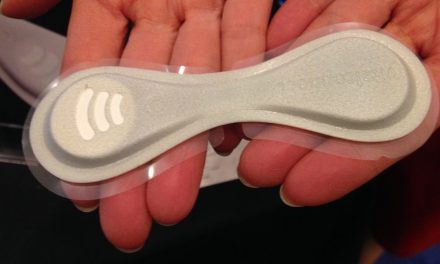The IHE PCD crew presented Meeting the Challenges of Integrating the Healthcare Enterprise. Didi Davis from HIMSS, kicked things off describing the IHE organization, what the IHE does, and how they do it. The IHE takes established standards and through collaboration with interested providers and vendors results in a series of "integration profiles" that specify how to configure multi vendor interoperable systems. Each integration area of focus, or domain, has a framework of standards designated to support the workflows and resulting integration profiles for a specific domain. Examples of domains include cardiology, eye care, IT infrastructure, patient care devices (PCDs), radiology, and more.
The process starts with use cases that describe workflows. These worflows are subsequently implemented across multi vendor systems using the standards framework for that specific domain. The resulting integration profiles are tested at an annual "conectathon" every January in Chicago, and demonstrated at Inteoperability Showcases held at RSNA and HIMSS, and then published for use by vendors, systems integrators and providers.
Another key message was the need for providers (buyers) to include requirements for interoperability and standards in the products that they buy.
Next up was Steve Grimes, VP of Enterprise Resource Planning at Technology in Medicine, talking about the convergence of medical devices and IT. He described the trends driving medical device integration with IT. Steve also outlined many of the benefits of this integration:
- Access to, comparison and analysis of rich set of clinical data from variety of sources that can be used to provide preemptive care
- Automatic charting of data to the electronic medical record (EMR)
- Closed loop systems … i.e., outputs from diagnostic devices (e.g., heart rate monitors & pulse oximeters) affect inputs on therapeutic devices (e.g., infusion pumps)
- Patient alarm management
- Asset tracking (i.e., RFID)
- Remote device management
- Monitoring data flow integrity & continuity
- Error code monitoring & remote diagnostics
- Software upgrades
After a review of specific devices being integrated, the resulting integrated medical systems were described. As the systems become more sophisticated, in their effort to improve patient safety and productivity, these systems can become more complex and expensive. As we get more dependent on these types of systems, when they fail it has a significant impact on patient care. This evolution has brought together IT and Biomedical engineering, frequently resulting in a clash of cultures.
Providers must assume a systems engineering role when adopting "home grown" system or multi vendor solutions. While single vendor solutions may be preferred, an increasing number of these systems cross product categories for which there is no single vendor solution. Historically, these systems have been adopted under the radar as a isolated systems. The complexity of these systems, and their impact on patient care, necessitate an strategic enterprise approach to ensure security, safety (like eliminating single points of failure), and manage infrastructure and costs.
The convergence of IT and medical devices are inevitable, and requires coordination between IT and biomedical departments. Clinical engineers can contribute to bridging these two very different departments, and provide a strategic systems vision that spans traditional IT and biomed domains.
Chis Riha, exec director of clinical systems engineering at Carilion Clinic Health Systems. He described the IT realm, with a review of different health care information systems.
Ray Zambuto, President Technology in Medicine, spoke in the IHE Patient Care Device (PCD) Domain. He ran down the history, starting with an IHE provider survey that indicated medical device integration was the second most popular area (50%) for future IHE efforts. Here's the PCD's charter:
The Patient Care Devices Domain is concerned with Use Cases in which at least one actor is a regulated patient care device. The PCD coordinates with other IHE clinical specialty based domains such as medical imaging.
Ray then laid out the workflows the PCD has tacked over the first three years. Another survey was done in 2006, asking for device priorities. The top 5 devices were vital signs reporting devices (EMR integration - 72%), continuous patient monitors (67%), ventilators (49%), anesthesia systems (44%), and infusion pumps (43%). Vendor priorities lagged considerably behind user's interests - the biggest lag with vendors was vents at 21%. Ray described the profiles proposed for 2007:
- Patient identification - estab patient context and binding ID to data stream
- Device - enterprise query
- Point of Care (PoC) real time plug and play integration
- Home telehealth (remote monitoring)
Throughout Ray emphasized the need for providers to participate in the IHE PCD efforts. As someone who's participated in the past, I can say that vendors are considerably over represented, and provider requirements, perspective, and priorities are sorely needed. "Decisions are made by those who show up!"
Questions: how does the groups work take place? There are two basic groups, the planning committee and a technical committee. Occasional face to face meetings (3 or 4 for each committee) are held for major planning and review efforts, with the rest of the work done via bi-weekly teleconferences and email. You can read technical work done to date by the PCD here. When a vendor says they're involved in IHE, be sure to ask them for their conformance statement - these are not a certification, but documents their successful participation in a connectathon.
One byproduct of the IHE effort is increased transparency regarding what connectivity and interoperability a vendor's products have - in a concise and detailed document. On the flip side, participating vendors are increasingly using their IHE participation as bragging rights and competitive advantage over vendors who do not participate.



That was a great post. I will have to bookmark this site so I can read more later.